Globular clusters have been used to solve cosmic mysteries

Globular clusters serve to unpack cosmic events from fast radio bursts to galactic mergers !
Fast radio bursts are phenomena that perplex astronomers: they are unpredictable and we observe them as extremely short flashes of radio “light” of the order of thousandths of seconds, but in that time emitting the energy that the Sun would in a day. Now, researchers pointed a set of 12 radio telescopes, spread over 8 countries and known as the European VLBI Network, to the location in space from which such a fast burst was detected in January 2020. They “wanted to look for clues to the bursts' origins”, and indeed they discovered that this series of bursts comes is the closest one ever seen, stemming from the outskirts of galaxy M81, some 12 million light-years away.
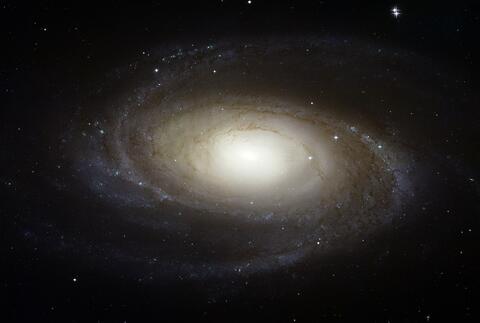
M81, also known as Bode's galaxy 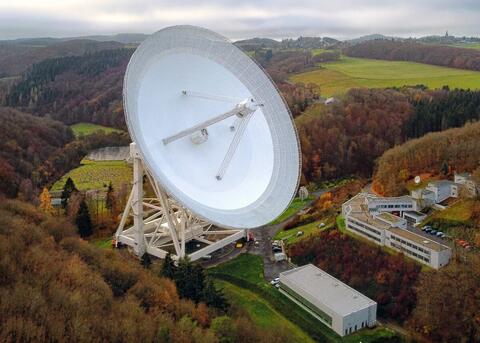
One of the radio dishes in the EVN
Moreover, the team was able to pinpoint the origins of the burst further to an old, globular cluster of stars. This was even more unexpected than our proximity with this source, because typically such bursts are generated in environments with lots of young stars, where supernovae are more frequent. These giant explosions leave behind highly magnetised remnants, which is a type of neutron star called a magnetar; those are believed to be the causes of fast radio bursts. To justify how such an object may have formed in a globular cluster, astronomers took the prediction of a white dwarf accreting mass from a companion star until it reaches a critical point after which it collapses into a magnetar, applied it to the system near M81 and found that this is the simplest explanation.

Interestingly, it’s also globular clusters that can help astronomers find out more about some physical processes that happen at much larger scales: in October last year, it was discovered that NGC 2005, one of 60+ globular clusters of the Large Magellanic Cloud (LMC), has a very unusual chemical composition. This chemical evidence led the researchers to conclude that the Milky Way’s satellite galaxy itself used to have a companion, with which it merged with at some point in the LMC’s history, just like the LMC will be absorbed by the Milky Way in 2.4 billion years and then Andromeda will “eat” our home galaxy after a collision in some 4 billion years. These complex interactions are what shape galaxies, and they are fairly common in our Universe, as new images taken by the HST portray.
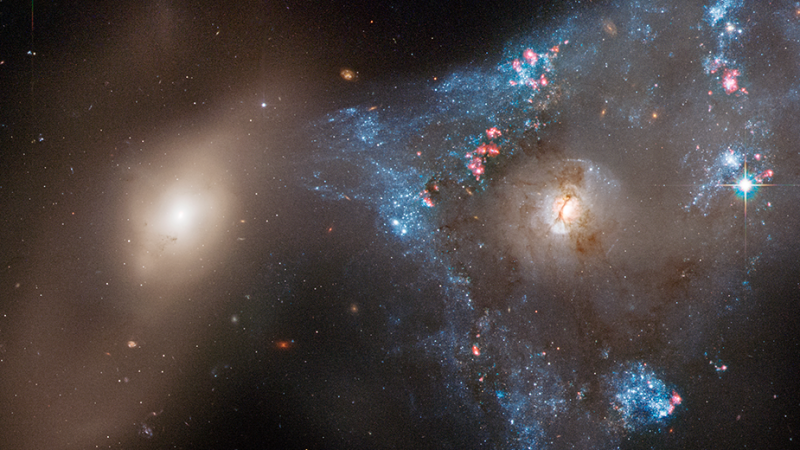
The first of those is of a head-on collision between NGC 2444 and NGC 2445. The latter one is the spiral galaxy that has strangely been distorted into a triangle shape. To explain this feature, astronomers built a model that shows that as the galaxies passed through each other, star-formation firestorm regions in NGC 2445 were “activated” and it’s the other galaxy’s gravitational influence that continues to pull on the spirals’ gas, despite the nucleus of the spiral galaxy now moving away. Since NGC 2444 is older, there isn’t much gas left to be taken away from it, so it’s NGC 2445’s gas, star-forming regions and young stars that form the bridge between the two – it is uncertain whether the continuing interactions will trap the rest of NGC 2445 too, or whether NGC 2444 will ultimately swallow the “triangle” and let the core go; the investigators see this as a “sandbox” to explore interacting galaxies better.
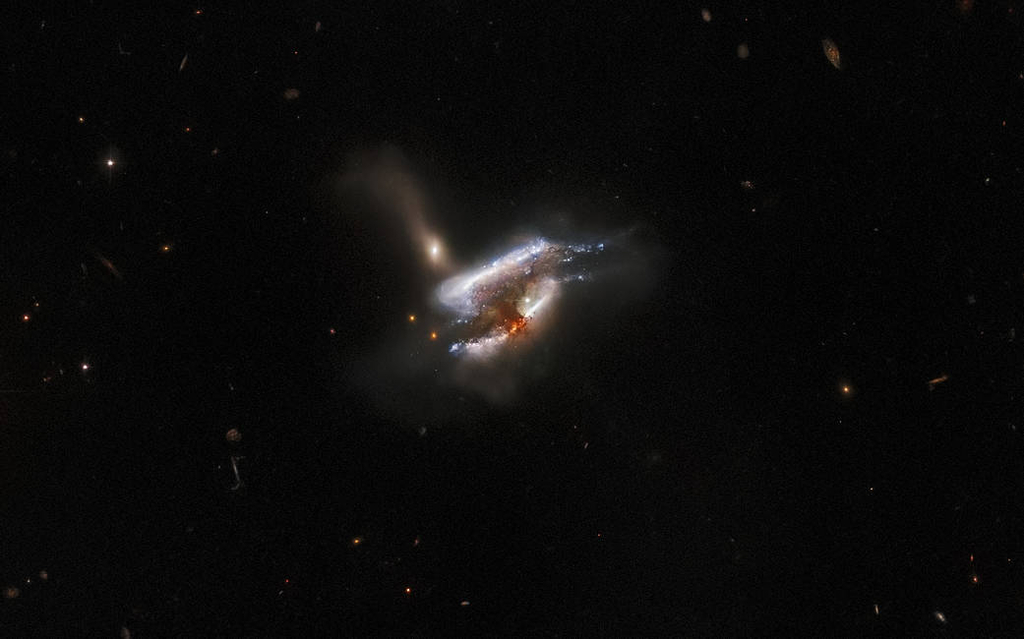
Another noteworthy new HST image is a peek at IC 2431, a currently ongoing merger of not just two, but three galaxies! That IC 2431 deserved a closer look was asserted by users of the Galaxy Zoo citizen science project, who labelled it as a “weird” type of galaxy – now the HST finally reveals why, as such trios are much less common.
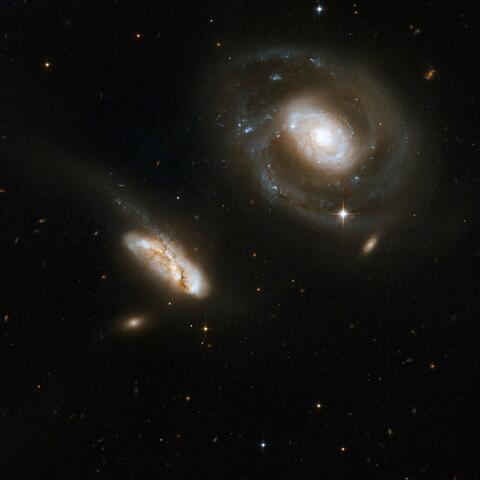
The 2008 image 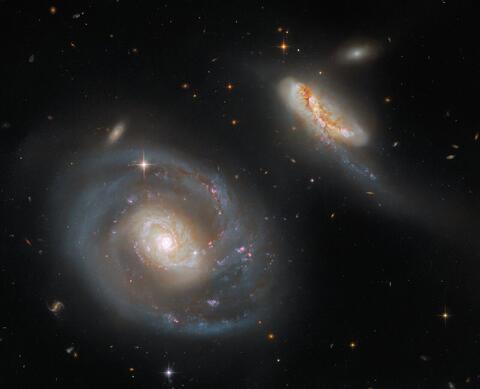
The new image
Last but certainly not least, we have this new image of the Arp 298 pair, which comprises NGC 7469 and IC 5283. The Arp catalogue, derived by the eponymous astronomer, is an atlas of peculiar galaxies. Arp 298 appears to be a very popular target, as the HST observed this cosmic dance in 2008.
What’s more, NASA has announced that one of the JWST’s first galactic capture in summer 2022 will be of precisely this pair !
Cover Image: Globular Cluster M10, ESA/Hubble & NASA
Image Credits:
1 - M81, NASA/ESA/Hubble Heritage Team (STScI/AURA)
2 - Effelsberg Radio Observatory, N. Tacken/MPIfR
3 - Artist's impression of a FRB from globular cluster, D. Futselaar/ASTRON
4 - Arp 143, NASA, ESA, STScI, Julianne Dalcanton Center for Computational Astrophysics, Flatiron Inst. / UWashington) // Processing: J. DePasquale (STScI))
5 - IC 2431, ESA/Hubble & NASA, W. Keel, Dark Energy Survey, Department of Energy, Fermilab, Dark Energy Survey Camera, (DECam), Cerro Tololo Inter-American Observatory, NoirLab/National Science Foundation/AURA, Sloan Digital Sky Survey // Acknowledgment: J. Schmidt
6 - Arp 298 in 2008, NASA, ESA, the Hubble Heritage Team (STScI/AURA)-ESA/Hubble Collaboration and A. Evans (University of Virginia, Charlottesville/NRAO/Stony Brook University)
7 - New Arp 298 image, ESA/Hubble & NASA, A. Evans, R. Chandar
